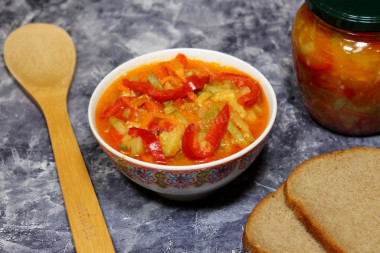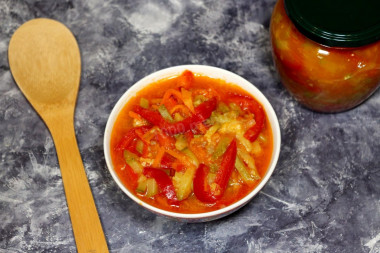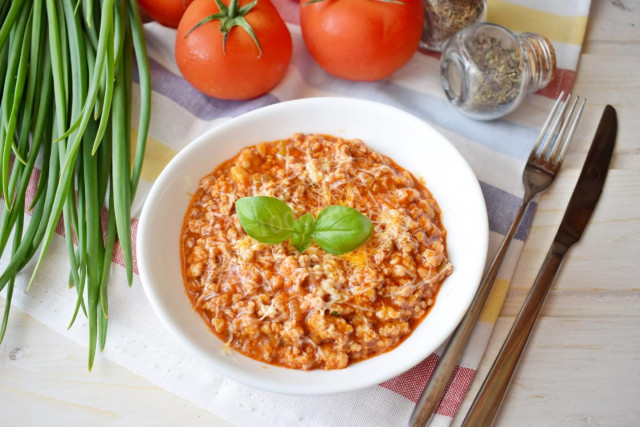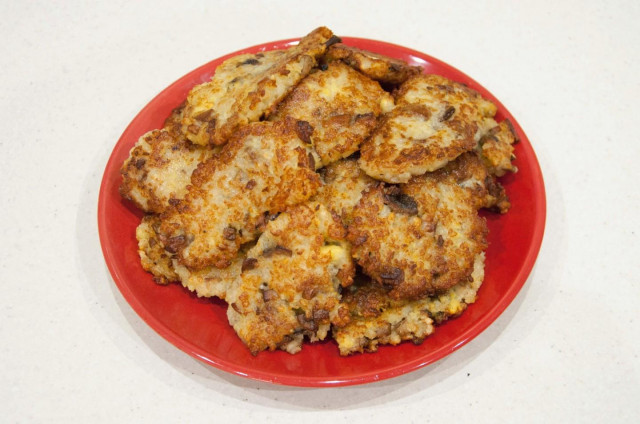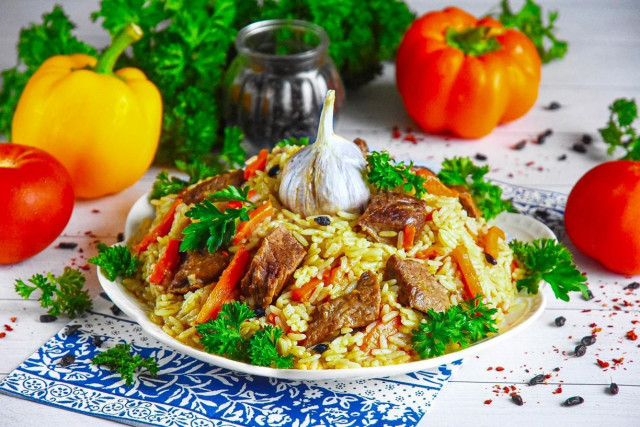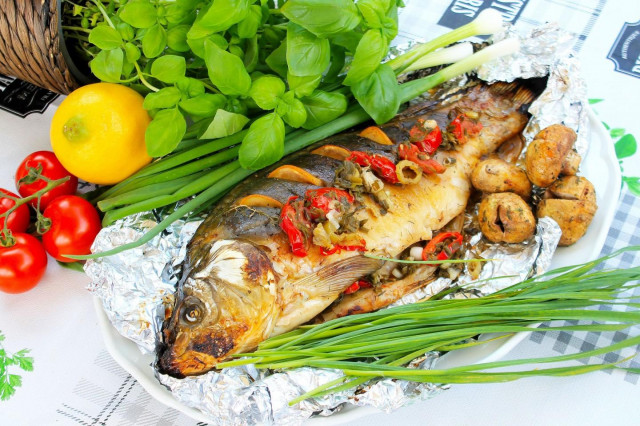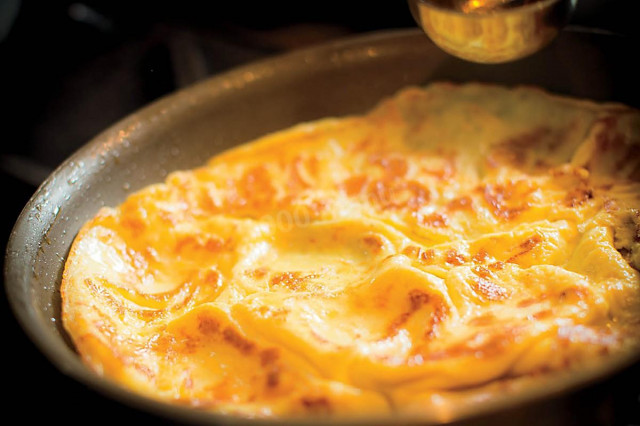Composition / ingredients
Step-by-step cooking
Step 1:

How to make lecho from zucchini for the winter? To begin with, prepare the following vegetables for the future lecho, namely: carrots, zucchini and bell pepper. Wash the vegetables thoroughly, then peel the carrots and cut them with a knife or a "slider" in the form of thin straws. Cut the zucchini into cubes or circles. Peel the onion from the husk and cut it into half rings. Bulgarian pepper, like carrots, cut into strips, but of a larger size.
Step 2:
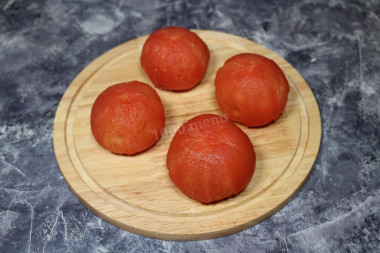
Now proceed to the tomatoes. In each tomato with a sharp knife, make shallow incisions crosswise and put them in a deep bowl. Next, boil the water, then pour boiling water into a container with tomatoes and leave them for a minute. Then drain the water, let the tomatoes cool down a little and remove the skin from them. Peel the tomatoes, cut into medium-sized pieces and pass through a meat grinder or blender.
Step 3:

Take a large saucepan with a thick bottom and pour a fifth of vegetable oil into it, put the pan on fire. In the already heated oil, put the carrots and onions prepared earlier. Lightly fry them.
Step 4:
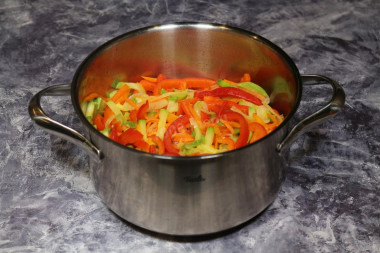
When the onions and carrots are softened, add the previously chopped zucchini and bell pepper, a little more oil. Then add salt and simmer all the ingredients in a saucepan for 5 minutes. Cook the lecho over medium heat. Add vegetable oil as needed.
Step 5:
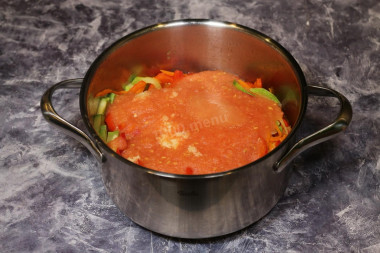
Next, add tomato puree to the pan with the rest of the ingredients, add sugar and add garlic, crushed through a garlic press. Simmer the dish for another 15-20 minutes, but on low heat. 5 minutes before the lecho is ready, pour in the vinegar and mix all the ingredients of the pan.
Step 6:
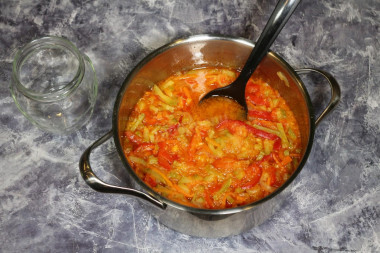
Before preparing lecho or any other preparations for the winter, it is best to prepare the container in advance so that the blanks can then be immediately transferred to containers. Put the finished lecho from zucchini already in sterilized jars. After that, turn the jars over and cover with a blanket or blanket until completely cooled.
Those people who make preparations for the winter often cook and lecho. In the usual version, the main ingredients are bell peppers and tomatoes. This is a very tasty dish! But there is lecho and zucchini. It is him that I present to your attention today. This is a great snack that can be served in addition, for example, to potatoes with meat or as an independent dish with a slice of bread.
I got a little more lecho than shown in the photo (there is very little left in the pan). But the final amount depends on many factors. It's hard to say exactly how much lecho you will get. It depends on the properties of the vegetables included in it, and on how much and how you will stew. It is better to cook the container with a reserve, so as not to do double work. Take 2-liter cans.The exact amount of lecho that I got is visible in step 6 (the volume of the pan is 5 liters and it is far from whole.
Remember that spices such as salt, sugar, as well as vinegar and its substitutes are used in recipes for winter preparations not only for taste, but primarily as preservatives. Therefore, in no case should you reduce the concentration of salt and sugar, and also replace vinegar (essence) with a weaker concentration than indicated in the recipe, otherwise vinegar (salt / sugar) will not show their preservative properties and the workpiece will be spoiled.
Follow the basic rules of conservation so that your workpiece is stored for a long time and without problems:
- wash vegetables thoroughly, even if you peel them
- remove any debris, dirt, earth from fruits and greenery
- get rid of rotten foods
- do not reduce the amount of preservatives and follow the tips described in the recipe
- sterilize empty cans (10 minutes - 0.5 liters; 15 minutes - 1 liter; 20 minutes - 2 liters; 25 minutes - 3 liters), boil the lids for 10 minutes
- when rolling up cans with a seaming machine, make sure that the lids fit tightly to the jar
- turn the jars upside down to check the quality of the twist
If you are new to canning, have little experience in home preparations, it is better to be safe and
sterilize cans of vegetables, even if the recipe says the opposite
. This guarantees you that the banks will not swell during storage if you did something wrong, did not report something/shifted or violated the technology.
Remember that banks swell more often for the only reason:
excess gases are formed in them
. And those, in turn, appear because
they are isolated by microorganisms trapped in the workpiece
.
Anyway,
the swelling of the cans has nothing to do with the quality of the recipe, which has already been successfully prepared.
How to calculate the number of cans, why banks explode and how to avoid it, as well as secrets and life hacks, read the article about preparations for the winter.
Caloric content of the products possible in the composition of the dish
- Onion - 41 kcal/100g
- Tomatoes - 23 kcal/100g
- Zucchini - 23 kcal/100g
- Sweet pepper - 27 kcal/100g
- Carrots - 33 kcal/100g
- Dried carrots - 275 kcal/100g
- Boiled carrots - 25 kcal/100g
- Garlic - 143 kcal/100g
- Granulated sugar - 398 kcal/100g
- Sugar - 398 kcal/100g
- Wine vinegar (3%) - 9 kcal/100g
- Vinegar 9% - 11 kcal/100g
- Balsamic vinegar - 88 kcal/100g
- Apple vinegar - 14 kcal/100g
- Vinegar - 11 kcal/100g
- Vegetable oil - 873 kcal/100g
- Salt - 0 kcal/100g


